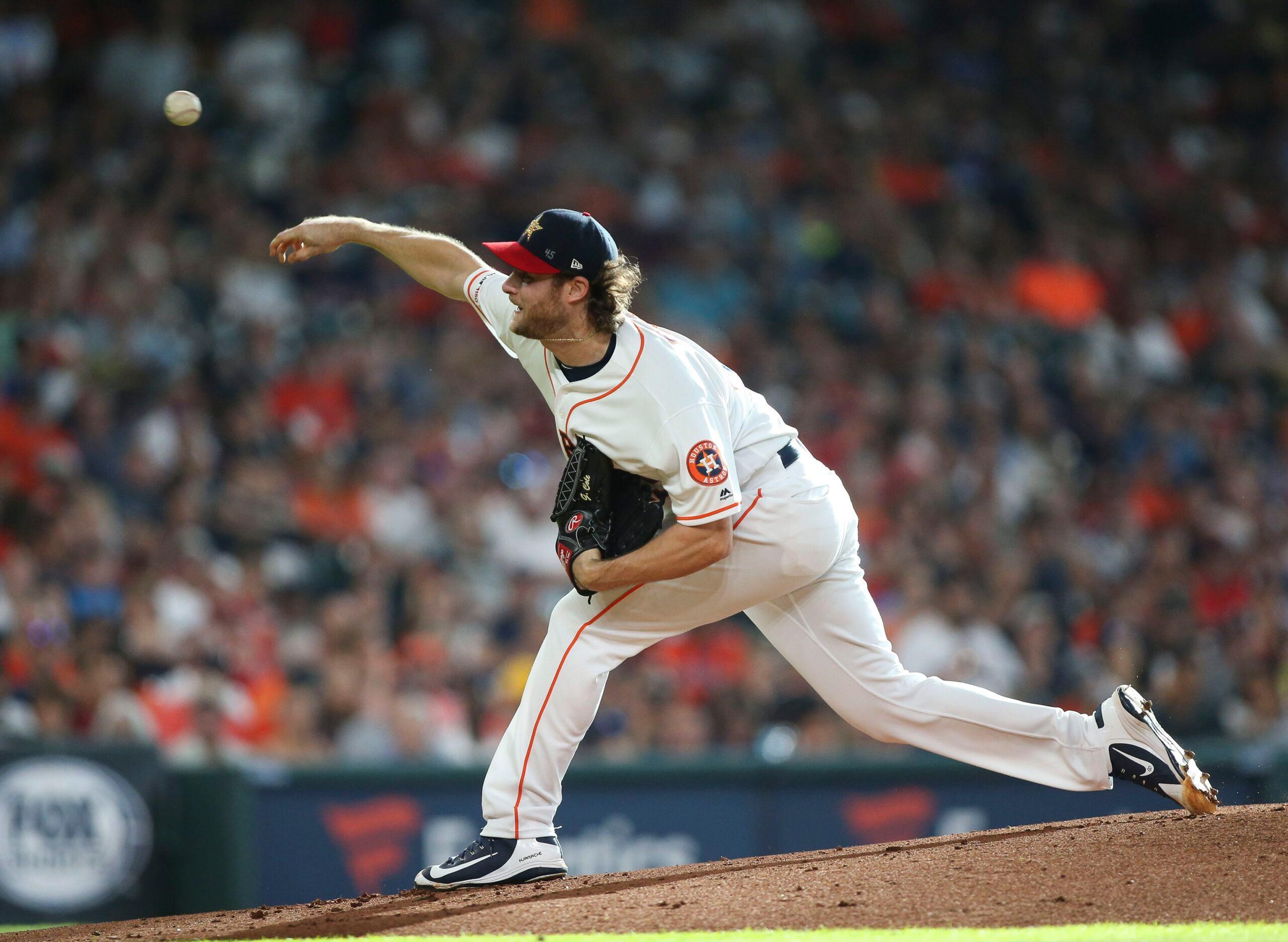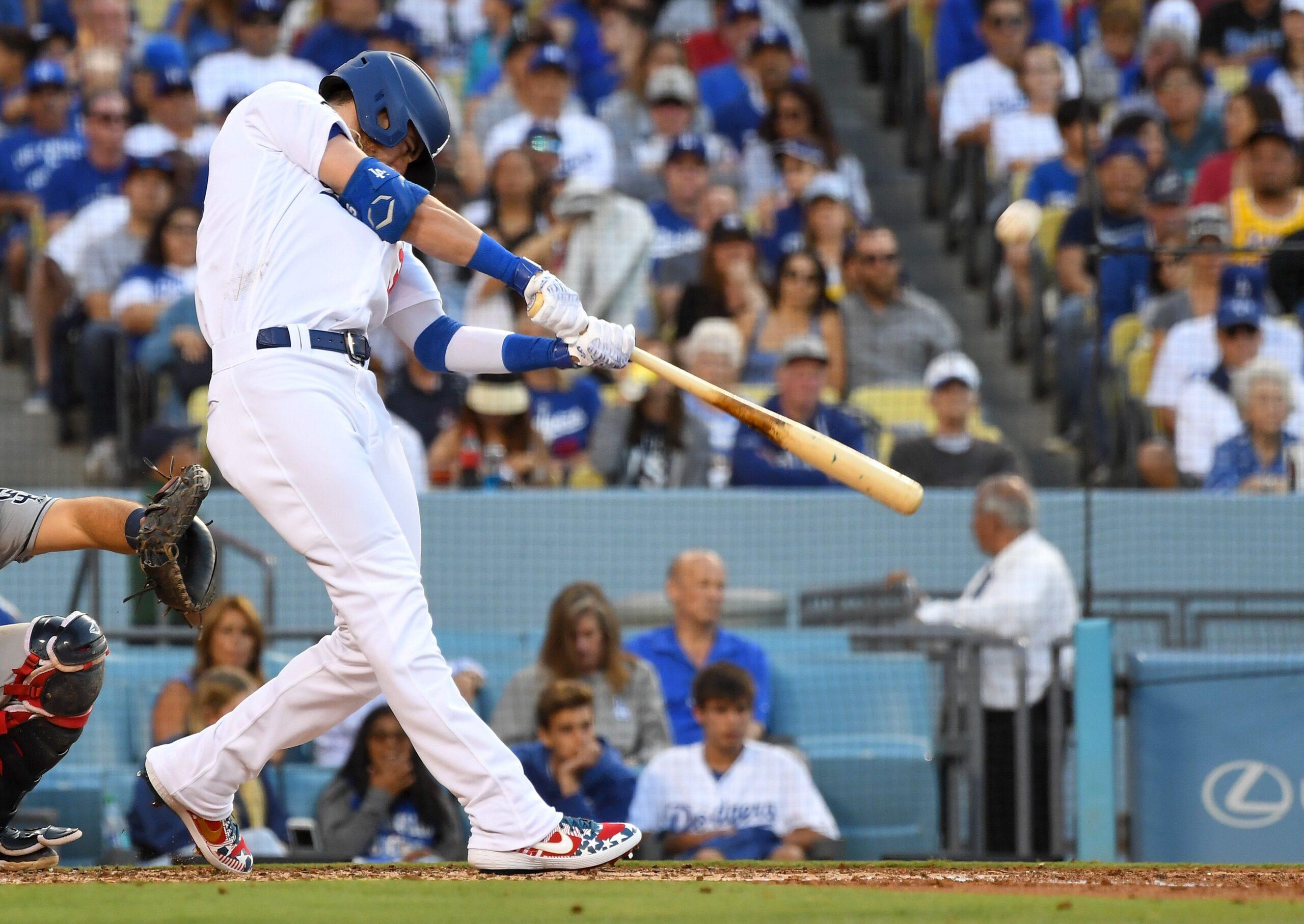The All-Star Game has wrapped (with little fanfare) and Vlad Jr. looks like the superstar we were promised. Now it’s time to get back to the games that matter. The Dodgers and Yankees look like they’re headed for an October showdown—can anyone stop them? How many more home runs will we see this year? Most importantly: Who will win the race to the bottom? Here are The Ringer’s completely accurate predictions for the second half of the 2019 MLB season.
At least 50 players will hit 30 homers or more.
Ben Lindbergh: In his new memoir, For the Good of the Game, MLB commissioner emeritus Bud Selig recounts the offensive inflation of the mid-1990s that helped set the stage for the record-setting seasons of Mark McGwire and Barry Bonds. Selig notes that in 1996, “There were 43 players who hit at least 30 homers. It was a staggering amount of home runs. There were only 13 who hit 30 in 1986, a decade earlier. Something was going on, for sure.”
Something is going on again. On July 1, Christian Yelich became the first player to reach the 30-homer mark this season. Cody Bellinger and Pete Alonso joined the club before the All-Star break. With slightly more than 55 percent of the regular-season schedule completed, 70 hitters are more than halfway to 30, and 56 hitters have gone deep at least 17 times. That puts the league on pace to break the single-season high for 30-homer hitters, 47, which was set in 2000—and with the weather getting warmer, that pace is picking up.
Unlike Bud, we don’t have to go back a decade to convey how dramatically the sport’s tater topography has shifted. In 2014, just five years ago, only 11 players made it to 30. This time, the primary cause of the increase is the baseball, not PEDs. (Actually, the ball may have been the culprit last time, too.) The 2019 ball is flying farther than ever, apparently the result of decreased drag due to lower seams, smoother leather, and greater roundness.
Barring another ball change in the second half, MLB will soon set a new record for the most homers hit in a season, as will a significant number of franchises. In contrast to the sluggers of the so-called “steroid era,” though, no individual player is on track to hit 60, let alone 70. The big beneficiaries of the new ball are the hitters who used to have warning-track power but now can clear the fences with greater regularity. That democratization of dingers has made milestones that used to be reserved for a few ultrapowerful players the province of dozens. Thus, the most representative players of this super-powered era aren’t a trio of superstars with beefed-up bodies, blowing by Ruth and Maris. They’re the humble 30-homer hitters. And they’re everywhere.
The Tigers, not the Orioles, will end up with the worst record in MLB by year’s end.
Michael Baumann: Two men are being chased through the woods by a bear when one of them stops to put on his running shoes. The other turns around and says, “Are you crazy? Even with the running shoes you’ll never outrun the bear!” The first man says, “I don’t need to outrun the bear, I just need to outrun you.”
In this metaphor, the Tigers are the guy with running shoes, his ill-fated friend is the Orioles, and the worst record in baseball is the bear. Yes, the Orioles have been historically bad, but the Tigers are just three games ahead of them in the standings, with a minus-157 run differential, as opposed to Baltimore’s minus-165. And while Baltimore will probably stand pat come the trade deadline on account of not having many (any?) players whom contenders will be interested in, the vultures are already circling around Detroit’s two best players: starter Matthew Boyd, who’s drawn interest from the Astros and Yankees, and All-Star closer Shane Greene, who has an ERA just north of 1.00 and will be a free agent after the 2020 season. In other words, the Tigers are almost as bad as the Orioles already, and unlike the Orioles, they will probably get worse before the season ends.
If Detroit does drop to rock bottom, the Tigers would be entitled to the no. 1 pick in the 2020 draft, likely University of Georgia right-hander Emerson Hancock. Not that that’s much of a consolation: Last year, the Tigers took another stud SEC righty first overall, Auburn’s Casey Mize, but despite Mize having been big league–ready for months, the Tigers refuse to call him up. Maybe next year, the Erie SeaWolves will be better than the Tigers too.
Both Ohio teams will make the playoffs.
Zach Kram: Let’s start with Cleveland, the easier choice, as Terry Francona’s team has a coin-flip chance of playing into October according to both FanGraphs’ and Baseball Prospectus’s playoff odds. Almost everything that could have gone wrong for Cleveland over the first few months went wrong: an injury to Francisco Lindor, the collapse of José Ramírez, long-term IL trips from two star pitchers. Yet the team enters the second half in the thick of the AL wild-card race, and just 5.5 games back of Minnesota—the closest the AL Central gap has been since mid-May. Cleveland plays Minnesota in 13 second-half games, providing an easy path to close the remaining distance, and with the club’s combination of division-enabled easy schedule and current hot streak (an AL-best 22-9 record since the start of June), another playoff berth is in Cleveland’s cards despite their first-half struggles.
Cincinnati faces much longer playoff odds (about 10 percent), as the Reds place last in the NL Central and ninth in the wild-card standings. But those ordinal rankings exaggerate the ground Cincinnati must make up—just 4.5 games in both division and wild card—and the Reds have played much better than their 41-46 record suggests. Their plus-27 run differential—a better predictor of future results than pure record—is better than that of the Brewers, Cardinals, and Pirates in the division, and the Phillies, Padres, and Rockies outside. Cincinnati sneakily has one of the best rotations in the majors and an offense that should improve with Nick Senzel starting every day, Scooter Gennett back in the lineup, and Joey Votto heating up (.315/.411/.522 since June 7). The Reds made a push to compete in 2019, and it just might pay off.
Gerrit Cole will break the single-season K/9 record.
Bobby Wagner: I want to try to understand how baseball has changed since the turn of the century through one player, and his name is Gerrit Cole.

In 2015, a 24-year-old Cole—whose makeup is Nolan Ryan meets the Terminator—burst into the national conversation by posting a 2.60 ERA and winning 19 games. He lost out on a Cy Young because of a truly dominant Jake Arrieta season, and then folded back into Pirates obscurity. Two years later, the Death Star Houston Astros swooped in and plucked Cole from Pittsburgh. Historically good teams getting even more loaded? Check.
When Cole moved from Pittsburgh to Houston (and in many cases, even before he moved), smart baseball writers on the internet said that the Pirates had been wasting Cole’s “stuff,” asking him to throw too many fastballs and not enough curveballs and sliders, his two best pitches. The Astros overhauled his pitch usage, and immediately Cole started striking out four more batters per nine innings pitched. A smart team embraces data to make a good player elite? Check.
Now it’s 2019, and Cole is striking out 13.1 batters per nine innings pitched, a tick off the single-season record of 13.4 set by Randy Johnson in 2001 (at 37 years old!). Yet his ERA is over a half-point higher than his breakout season in 2015, in large part because almost 20 percent of the fly balls he allows are leaving the park. Home runs and strikeouts at comically high historical levels? Check.
Aside from being the most aesthetically pleasing pitcher in baseball, Gerrit Cole is the embodiment of how the evolution of pitching philosophy applies to the game’s cream of the crop. In other words, he’s a worthy candidate to get over the hump and break the Freak’s single-season K/9 record.
The Twins will finish with their best record this decade … and still lose to the Yankees in the playoffs.
Megan Schuster: Allow me to start with a reference that my fellow Minnesotans will appreciate: I am to the Twins as Charlie Brown is to kicking a football. I buy in year after year, despite knowing that the outcome will likely be disappointment. From the Brad Radke–Johan Santana teams, to the Joe Mauer Sports Illustrated cover years, to the piranhas and the unlikely 2017 playoff squad, I’ve been in. And even though I started this season trying to tamp down my expectations, this iteration of the team has me dreaming once again.
The Twins are 56-33, and if their winning percentage keeps up, they could top triple-digit wins for the first time since 1965 (and the second time in team history). Even if that doesn’t happen, though, they should still finish with their best record this decade. What they’ve done this season—with a new manager and scores of new players and young guys who are showing up in shocking fashion—is remarkable and has made this one of the most fun baseball seasons in my memory. But if all those other Twins teams have taught me anything, it’s that no level of regular-season success can stop the inevitable. And for Minnesota, the inevitable is losing to the Yankees in the playoffs. (See: 2003, 2004, 2009, 2010, and 2017—five out of the past six times the Twins have made the postseason.) If anyone needs me, I’ll be spending the next three months researching ancient methods to reverse curses.
Fernando Tatís Jr. will have the best second half of all NL shortstops.
Isaac Levy-Rubinett: Tatís Jr.’s name is conspicuously absent on the shortstop WAR leaderboard, but that’s only because he hasn’t played enough to qualify. Filtering by plate appearances brings his place among MLB shortstops into sharper focus. Tatís has only 234 plate appearances so far this season as he’s battled a hamstring strain, but he’s still managed to rack up 3.0 WAR, which is the most on the Padres (who also have Manny Machado, mind you) and sixth among all MLB shortstops with at least 230 plate appearances, though the players above him have all hit more than 340 times. The 20-year-old Padre arrived to the Show this season facing the buzz of lofty expectations; he has swatted away the challenge like a middle-cut fastball.
Tatís has accrued most of his value on offense, pairing tape-measure power with dynamic basepath speed and a daring sensibility. During a three-day stretch in late June and early July, Tatís scored from second on a ground ball to the shortstop and from first on a single to right, and tagged up from third on a popup to the second baseman. He conjures runs out of seemingly routine situations, setting the table for the Padres’ high-powered offense. Though he still has room to improve defensively, he and Machado form a stout left side of the infield, treating fans to a nightly laser show as the hardest-throwing 5-6 tandem in baseball—Tatís recorded the fastest throw by a shortstop this year at 94 miles per hour.
Tatís’s tools are undeniable, but he must prove that they will translate into consistent play over a longer period of time. Skeptics will point to his unsustainably high batting average on balls in play and his 28.6 percent strikeout rate as signs of impending regression. But Tatís has looked like a superstar, warping our understanding of what is possible on a baseball field in the process. Some regression may come, but the young shortstop is atop the leaderboards to stay.
The Dodgers will finally win the World Series.
Justin Sayles: When Dodgers manager Dave Roberts said this week that he’d like to have a chance to decline a White House invite, the responses were predictable: Let’s see you win something first. Totally fair! This is a team that has experienced great regular-season success this decade—including six straight division titles and a 104-win season—only to fall short when the stakes were at their highest. But as the second half of the season starts up and the Dodgers look like the best team in baseball, I’m here to tell you this October will be different.

The Dodgers are coming off two straight World Series losses, and logic would dictate that the 2019 team would regress and perhaps even cede the division to the upstart Padres or Diamondbacks. Instead, the Dodgers raced out to the best record and run differential in baseball by the All-Star break, and they currently own a 13.5-game lead on second-place Arizona. They’d have to completely collapse to lose the NL West (though this team does have recent experience with long skids). Even with three straight losses to San Diego to close the season’s first half, Los Angeles is on pace for 106 wins, which would be the best mark in the franchise’s long history.
But as the Dodgers faithful knows, NL West titles and 100-win seasons don’t necessarily lead to championship parades. So why is this year’s squad different? It starts with the rotation, which has been the best in baseball this season. It boasts a legitimate Cy Young contender in Hyun-Jin Ryu, a diminished but still great Clayton Kershaw, and a third All-Star in the flame-throwing Walker Buehler. This a better rotation than the team has run out in the past few postseasons—and taking the October pressure off of Kershaw can only be a good thing for the team’s title hopes. (If there’s a flaw on this team, it’s the bullpen, but the shortened rotation should allow them to use Ross Stripling, Kenta Maeda, and possibly even Rich Hill in relief.)
Los Angeles also has one of the most complete lineups in the league: The Dodgers lost Yasiel Puig, Matt Kemp, and 2018 rental Manny Machado, but still scored 480 runs—third in the National League—before the break. Though they owe much of that to MVP front-runner and Baseball-Reference WAR leader Cody Bellinger, rookie breakout Alex Verdugo, and first-time All-Star Max Muncy, the Dodgers as a whole have put up an NL-leading OPS of .808. Simply put, this is a balanced team that would present a postseason nightmare for every team short of the Astros. But even in that hypothetical rematch, I like Roberts’s odds of having an invite to decline.
… Unless things continue to go this well for the Yankees.
Sean Yoo: In 2018, I correctly predicted that the Yankees would break the single-season home run record. That probably won’t happen this year since they’re currently sitting at 149 home runs, 12 fewer than where they were at this point last year. But fortunately for all you Yankee fans (and haters), I have some more Yankee-related predictions:
• DJ LeMahieu will finish the season with the most hits in baseball. Currently Whit Merrifield of the Royals leads the league in hits with 117. LeMahieu is in second with 113 hits in 46 fewer at-bats. DJ has been on an absolute tear this season, and if he continues to play at the same level or even close to it, it seems more than likely that he will finish the season as the hit king.
• Aaron Judge will finish with at least 30 home runs. Judge, who missed 54 games with an oblique injury, is back and playing like he never left. Judge reached base in seven of the last eight games before the break while also hitting three dingers. He currently sits at nine home runs and would need to hit 21 to get to 30. But if anyone can do it, it’s Aaron Judge.
• Pending a trade, the Yankees’ top pitching prospect, Deivi Garcia, will make his regular-season debut in 2019. Garcia, who was moved up to Triple-A immediately following the Futures Game, has shown why the Yankees consider him an elite prospect. In a little more than 68 innings in the minors, the 20-year-old has struck out 114 batters while having an ERA just slightly above 3.00. Look for Garcia to show off his stuff in the bullpen this summer.
• My last prediction: The Yankees will win the World Series. Currently the Yankees are one game back from the Dodgers for having the best record in baseball. The Bronx Bombers have done this with more than half their roster on the IL and with the rest of the team slowly coming back into form, it seems like this is the year for no. 28. FiveThirtyEight currently gives the Yankees a 19 percent chance to win the World Series, while the Dodgers have a 23 percent chance. The Dodgers will potentially make the World Series for the third straight year, but if the past two years are any indication, the AL team will be victorious.
